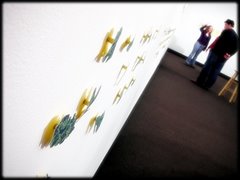

www.worth1000.com

 George Grosz and John Heartfield
George Grosz and John Heartfielddude3966 (http://freesound.iua.upf.edu/usersViewSingle.php?id=191680)
Cars.wav (http://freesound.iua.upf.edu/samplesViewSingle.php?id=29558)
Corsica_S (http://freesound.iua.upf.edu/usersViewSingle.php?id=7037)
STE-013 train and bell.wav (http://freesound.iua.upf.edu/samplesViewSingle.php?id=28777)
By fonogeno (http://freesound.iua.upf.edu/usersViewSingle.php?id=5190)
this is chicago.wav (http://freesound.iua.upf.edu/samplesViewSingle.php?id=20145)
doors closing 03.wav (http://freesound.iua.upf.edu/samplesViewSingle.php?id=20143)
bondegi (http://freesound.iua.upf.edu/usersViewSingle.php?id=235387)
substep.wav (http://freesound.iua.upf.edu/samplesViewSingle.php?id=30203)
Heigh-hoo (http://freesound.iua.upf.edu/usersViewSingle.php?id=21830)
ueno_station.aiff (http://freesound.iua.upf.edu/samplesViewSingle.php?id=29657)
Heigh-hoo (http://freesound.iua.upf.edu/usersViewSingle.php?id=21830)
tin_sign.aiff (http://freesound.iua.upf.edu/samplesViewSingle.php?id=29984)
lonemonk (http://freesound.iua.upf.edu/usersViewSingle.php?id=230160)
ViaRail_Announcement.wav (http://freesound.iua.upf.edu/samplesViewSingle.php?id=30168)
linako (http://freesound.iua.upf.edu/usersViewSingle.php?id=63088)
sleepsnort.aif (http://freesound.iua.upf.edu/samplesViewSingle.php?id=17483)
jppi_Stu (http://freesound.iua.upf.edu/usersViewSingle.php?id=56518)
snoring_sample.wav (http://freesound.iua.upf.edu/samplesViewSingle.php?id=16755)
let go home.wav (http://freesound.iua.upf.edu/samplesViewSingle.php?id=20144)
bondegi (http://freesound.iua.upf.edu/usersViewSingle.php?id=235387)
substep.wav (http://freesound.iua.upf.edu/samplesViewSingle.php?id=30203)
Police sirens.wav (http://freesound.iua.upf.edu/samplesViewSingle.php?id=24347)Heigh-hoo (http://freesound.iua.upf.edu/usersViewSingle.php?id=21830)
tin_sign.aiff (http://freesound.iua.upf.edu/samplesViewSingle.php?id=29984)
 Janet Cardiff
Janet CardiffBy Anton (http://freesound.iua.upf.edu/usersViewSingle.php?id=58)
man cleaning nose.wav (http://freesound.iua.upf.edu/samplesViewSingle.php?id=347) By nicStage (http://freesound.iua.upf.edu/usersViewSingle.php?id=1198) stevenClayLaughLoop2.wav (http://freesound.iua.upf.edu/samplesViewSingle.php?id=1792)By WIM (http://freesound.iua.upf.edu/usersViewSingle.php?id=22241) sd_boyshout08 imfinethankyouandyou.wav (http://freesound.iua.upf.edu/samplesViewSingle.php?id=26163)
